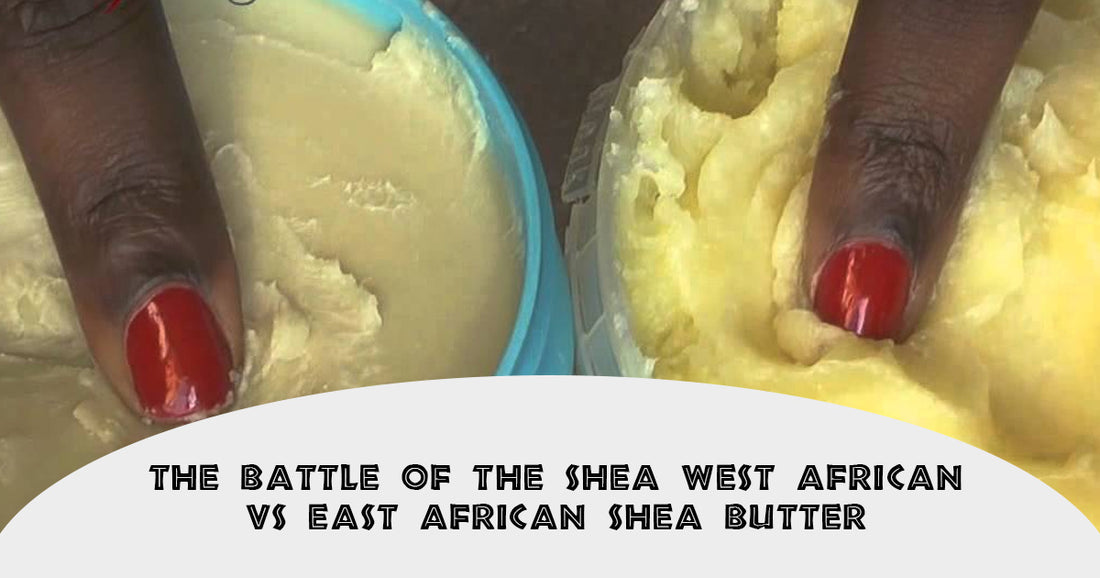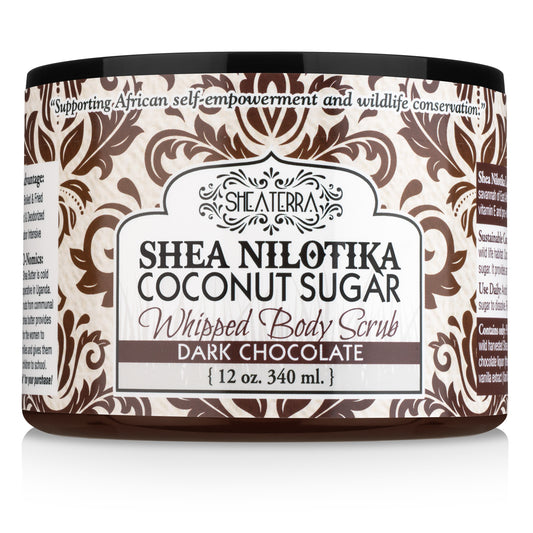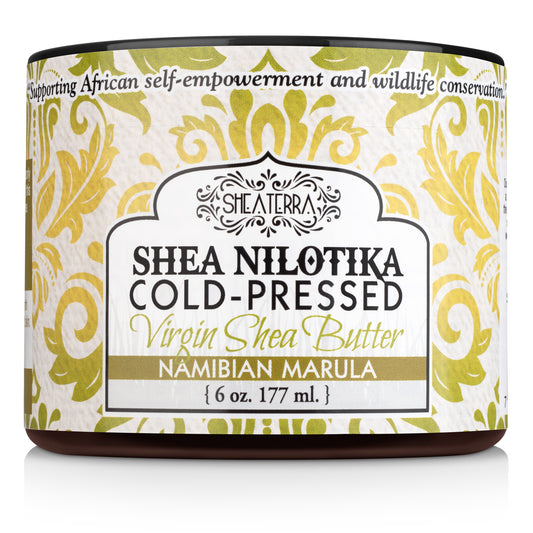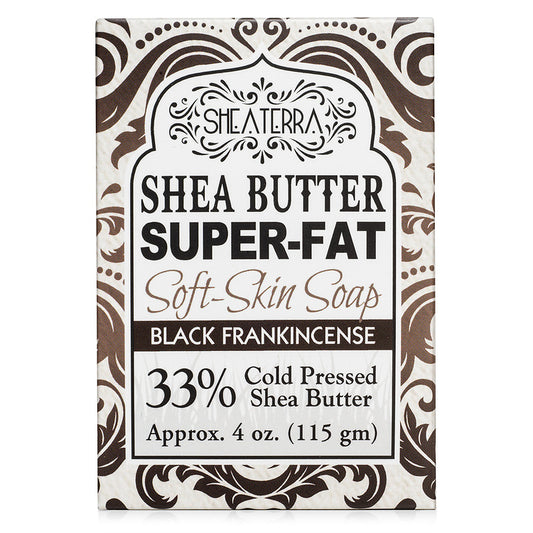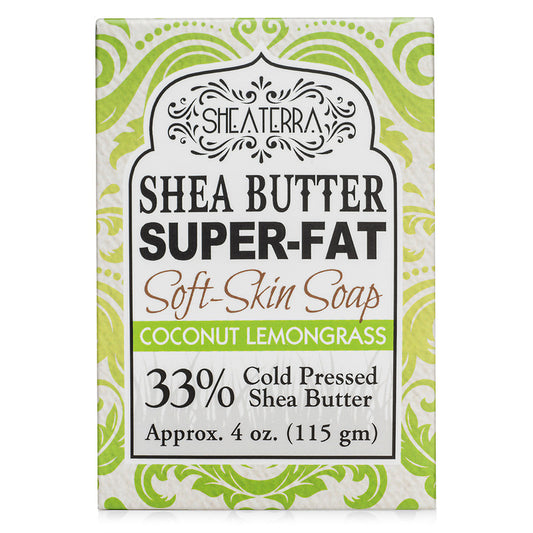A cultural landmark of indigenous tradition in Africa and a cosmetic sensation in the west, Shea butter has been used for many purposes for centuries. Western consumers praise its natural nourishing and healing properties, making it one of the most popular skincare products around the world.
But there’s a catch, not all shea butters are created the same way or for the same reason. The most celebrated types of shea butter originate from different agricultural regions of Africa - West African and East African shea butter.
There are thousands of moisturizers to choose from, especially in the winter. Explore the scientific, cultural, and pharmaceutical aspects of both types with Shea Terra and determine which one works best for you.
The West African Shea Butter
West African Shea (Vitellaria paradoxa) is more commonly used across the world compared to its counterpart. It is also more refined to make it usable across all kinds of demographics. A common misconception spread by major cosmetic giants is that refining is carried out to enhance the raw product but it's often not the actual intent.
Most cosmetic manufacturers tend to speed up the process of breaking open shea nuts using chemicals like hexane. Furthermore, they usually bleach and deodorize the raw butter to strip away the natural texture, aroma, and color. This leads to - Including the time it stays on the shelf - the degeneration of its iconic healing properties from the original raw butter.
All hope is not lost yet…
Close-to-pure and high-quality products are still available on the market; you just have to look for them. To preserve its natural essence cosmetic purists, have the nuts collected and processed by hand. The raw butter is then extracted, followed by heating, filtering, and molding it into an immaculate form. The result is a butter with a slightly yellowish tone and nutty aroma.
Shea butter has been an integral element of West Africa’s cultural identity for centuries. The multifarious uses range from cooking, a natural sunscreen to a true-to-life remedy for many skin conditions. Countries like Burkina Faso, Ghana, and the Ivory Coast in West Africa still use traditional methods to produce shea butter which is a big source of revenue for the locals.
Which West African Shea Butter Should I Choose?
West African shea butter is richer in vitamins A, E, and F compared to East African shea butter. Well-known for retaining essential fatty acids, which aid in healing many skin problems. Anti-aging, elasticizing the skin, healing, and moisturizing are only some of the uses for the all-purpose West African shea butter.
Are you a purist and looking for undiluted and high-quality West African shea butter? You’re in luck! because our team at Shea Terra has crafted the perfect fit for you - The Ghana Gold Cold-Pressed Virgin Shea Butter. We dried our brains numb to source nuts directly from West Africa and give birth to an unrefined, natural, and never deodorized original version of West African shea butter.
The East African Shea Butter
Hailing from East African countries, abundantly from North Uganda and South Sudan, East African shea butter (Vitellaria nilotica) has gained a lot of attention over the past decade. This particular version of shea butter transfused with its recent rise to fame has sadly become saturated too due to the profit-driven agendas of the western cosmetics industry.
Unfortunately, manufacturers put out East African Shea butter products that are far from pure because of the extensive chemical procedures it goes through before being packaged.
Shea butter should be as pure and unrefined as possible to reap all the natural miracles it’s capable of, such as healing inflammatory skin and protecting the skin from UV radiation and other environmental factors. It has also been proven to heal wounds, skin rashes, arthritis, dermatitis, stretch marks, and many other types of skin conditions.
So…What makes it unique?
East African shea butter is one the most versatile and naturally bioactive superfoods for the skin out there. The rare East African Shea aka Nilotica Reserve is rich in vitamins A, E, and F with 25% more essential fatty acids with different compositions than West African shea butter. It is native to the deep Nile River Valley of Uganda.
East African shea butter has a softer and creamier texture and is way easier to apply than its Western counterpart due to the difference in the composition of fatty acids. It also has a lighter color and a sweet subtle scent.
Which East African Shea Butter Is The Best?
We at Shea Terra put all of our resources and cognitive capital into sourcing, sorting, cracking, filtering, and packaging pure shea buts directly from East African countries. Then by utilizing cutting-edge botanical procedures we mold the purest and most natural East African Shea butter possible at an affordable price.
The Shea Nilotica East African Shea Butter is a Shea Terra original and a product loved ever since its release. We are immensely proud of fulfilling the demand for pure East African shea at a reasonable price.
What’s Really The Difference Between East African & West African Shea Butter?
Let’s be honest, both of these variants of Shea butter are miracles of mother nature bestowed upon us. Making a statement that one is better than the other will be an injustice to the cultural, scientific, and pharmaceutical significance of both types of shea butters.
But there are some differences between the two, especially in popularity, origin, usage, and composition. The biggest difference lies in the composition and origin, East African shea is only grown in Northern Uganda and South Sudan whereas West African shea is grown in many West African countries such as Ghana, Nigeria, Burkina Faso, etc.
The state of both butters at room temperature plays a big role in their different usages and acceptance. East African shea butter is softer and creamier than West African shea butter. It has a smooth and silky texture, which makes it quick and easy for users to apply. On the other hand, West African shea butter has a grainier and harder texture. West African shea is also known for its nutty aroma and slightly beige or yellowish color compared to East African shea which has a subtle and sweet scent.
East African shea butter is scientifically considered to be higher in therapeutic and pharmaceutical properties, this is because it contains more intricate fatty acids than West African shea butter. It is also rarer due to lower production rates and civil turmoil in Uganda and Sudan.


